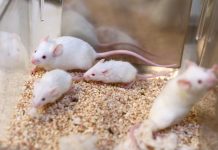A new model using microbial genetic information highlights how soil microbes efficiently store carbon from plant roots, which is crucial for climate change mitigation and informing sustainable agricultural strategies worldwide
A team of scientists from the Department of Energy’s Lawrence Berkeley National Laboratory has unveiled a cutting-edge model that promises to revolutionise our understanding of soil microbes and their crucial role in carbon sequestration.
Published in the prestigious journal Nature Microbiology, the research introduces a game-changing approach incorporating genetic information from microbes, offering a new perspective on the hidden world beneath our feet.
The global carbon cycle and carbon storage
The study, led by Berkeley Lab’s Postdoctoral Researcher Gianna Marschmann, emphasises the limitations of existing climate models, which often overlook the vital contributions of soil microbes.
These microscopic organisms play a pivotal role in the global carbon cycle, affecting the amount of carbon stored in soil and influencing climate change dynamics.
Marschmann highlighted the significance of this research, stating, “Our research demonstrates the advantage of assembling the genetic information of microorganisms directly from soil. Previously, we only had information about a small number of microbes studied in the lab. Having genome information allows us to create better models capable of predicting how various plant types, crops, or even specific cultivars can collaborate with soil microbes to better capture carbon.”
Traditional models
The traditional models relied on data from a minuscule fraction of lab-studied microbes, leaving a vast majority unexplored. The team’s innovative approach involved using genome information to build a versatile model adaptable to diverse ecosystems, from California’s grasslands to the thawing permafrost in the Arctic.
The research focused on the microbes living around plant roots, known as the rhizosphere, which accounts for 1-2% of Earth’s soil volume but holds up to 30-40% of Earth’s carbon stored in soils.
The scientists utilised data from California’s Hopland Research and Extension Center to simulate microbes in the root environment to understand plant-microbiome interactions in a rangeland setting.
Predicting essential traits of microbes
The breakthrough lies in the model’s ability to predict essential traits of microbes influencing their utilisation of carbon and nutrients supplied by plant roots. The team discovered that distinct microbial growth strategies emerge as plants release carbon during different growth stages.
Surprisingly, microbes with a slower growth rate were found to be exceptionally efficient in using carbon, storing more of this vital element in the soil.
Eoin Brodie of Berkeley Lab and Jennifer Pett-Ridge of Lawrence Livermore National Lab, the corresponding authors, explained the broader implications of this discovery. “This newfound knowledge has important implications for agriculture and soil health. With the models we are building, it is increasingly possible to leverage new understanding of how carbon cycles through soil,” stated Marschmann.
By solving the mysteries of the soil microbiome, scientists are now better equipped to develop strategies for preserving carbon in the soil, supporting biodiversity, and fostering plant growth on a global scale.
Editor's Recommended Articles
-
Must Read >> Researching soil and the climate














